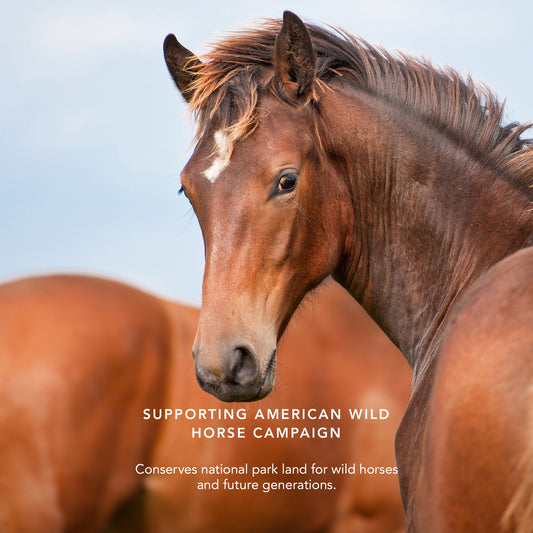
caption.
The Butterfly Effect – The Big Impact of Conserving These Small Creatures
With our Spring ’25 Les Papillons Collection, we’re partnering with two nonprofits in the US and the UK to conserve butterflies and other pollinators in their habitat.
There’s a poetic elegance to the idea behind the "butterfly effect"—the notion that a single, delicate flutter of a butterfly’s wings in one part of the world can spark momentous changes in another. Though symbolic, this principle captures something real: the interconnectedness of all life on earth. At Chantecaille, this truth fuels our philanthropic mission to protect biodiversity, starting with butterflies themselves.
For our founder, Sylvie Chantecaille, this journey began in 2006, when she noticed something troubling: the butterflies that once filled her garden had all but vanished. This loss sparked a passion for understanding the plight of these fragile creatures and led to the launch of Les Papillons, our first philanthropy-focused beauty collection. Today, we revisit our roots with the Spring 2025 Les Papillons collection—gorgeously crafted palettes and lipsticks inspired by the iridescent wings of butterflies—in support of two nonprofits dedicated to saving these winged marvels: The Xerces Society for Invertebrate Conservation in the U.S. and Butterfly Conservation in the UK.

caption
Why Butterflies Matter
Butterflies aren’t just beautiful—they’re vital to life as we know it. These delicate pollinators flit from flower to flower in search of nectar, their bodies collecting and depositing pollen as they go. The combined efforts of all pollinators help 85% of flowering plants, including food crops, to reproduce. Simply put, every third bite of food you eat owes something to butterflies and their fellow pollinators.
Beyond pollination, butterflies play key roles in ecosystems. They serve as a food source for birds, spiders, and bats, and their larvae (caterpillars) in particular sustain countless bird species. Butterflies are also nature’s alarm bells. A decline in their numbers signals ecosystem imbalances, giving scientists crucial clues about environmental health.
Unfortunately, these signals are growing louder. Butterfly populations worldwide are plummeting due to habitat loss, climate change, and pesticide use. Scientists estimate that up to one in five butterfly species are at risk of extinction. Without them, the intricate web of life they support could unravel.

caption
Partners in Conservation
To confront these challenges, we’ve partnered with two organizations committed to reversing the decline of butterfly populations.
The Xerces Society works to protect butterflies and other pollinators through science, advocacy, and on-the-ground projects. (They are also our partner on our Bee Cheek Shade!) They’ve conserved tens of millions of acres of habitat across the U.S., helping butterflies find safe havens in a rapidly changing world. Among their successes, the Xerces Society counts their actions in support of the Mardon skipper butterfly, which was declining throughout Washington, Oregon, and Northern California in the US; their intervention—alongside a coalition of researchers, agency staff and volunteers—led to an unprecedented conservation effort for this butterfly, keeping it off of the U.S. Endangered Species list.
“Butterfly conservation takes an all hands on deck approach, with many partners (from farmers to gardeners to park managers) helping to achieve success,” said Scott Black, executive director of the Xerces Society for Invertebrate Conservation. “We are so excited that Chantecaille has become such a strong partner through funding conservation and amplifying messaging so more people can take positive action.
Meanwhile, in the UK, Butterfly Conservation has been safeguarding butterflies, moths, and their habitats for over 50 years. Their 2022 State of the UK’s Butterflies report found that 80% of species have declined in abundance or distribution since 1976. Through habitat restoration, community engagement, and species monitoring, they’re bringing back biodiversity, one flutter at a time. Butterfly Conservation has successfully reintroduced the Chequered Skipper butterfly to England, where it became extinct in 1976. And their monitoring shows that several of the UK’s most threatened butterflies and moths—among them, the Pearl-bordered Fritillary, High Brown Fritillary, and Duke of Burgundy—are recovering, thanks to their landscape projects.

caption.
Creating Pollinator-Friendly Spaces
One of the best ways to save butterflies is by creating and restoring habitats. Chantecaille’s donations from the Les Papillons collection will support habitat regeneration and management, particularly in urban areas.
The Xerces Society’s Pollinator Habitat Program provides native plant kits to schools, community gardens, and urban farms across the U.S., empowering local groups to build pollinator-friendly spaces. These habitats don’t just nourish butterflies—they also capture carbon, boost biodiversity, and bring communities closer to nature. Since the program’s launch, Xerces and kit partners have put over half a million pollinator plants in the ground for the benefit of these vital animals. We plan to fund habitat plant kits to be shared with underserved and nature-deprived communities who have submitted qualified applications. In this model, the recipients will provide land, labor, time and care to secure the flowering habitats for years to come.
In London, since 2021, Butterfly Conservation’s urban initiative has transformed 100 green spaces across 17 boroughs, involving over 300 volunteers in creating habitats and surveying species. Thanks to these efforts, more than 23,000 square meters of urban land now support butterflies and moths. Our support will help them continue to expand this work, inspiring city dwellers to plant butterfly-friendly gardens, balconies, and even window boxes.
“We are excited to be working with Chantecaille, a brand with a longstanding commitment to butterflies and the environment,” says Julie Williams, Butterfly Conservation’s CEO. People are the key to nature’s recovery, and with support from Chantecaille and their customers, Butterfly Conservation will be able to provide more opportunities for people in towns and cities across the UK to get involved in helping butterflies and moths thrive. We believe that everyone should have the right to access nature, and we are delighted that this funding will help connect more people to green spaces in their local area.”

caption.
How You Can Help
The beauty of butterfly conservation is that anyone can join in. Whether you have a sprawling yard, a tiny balcony, or a single windowsill, there’s something you can do. Plant nectar-rich flowers to feed adult butterflies and plants like milkweed for caterpillars. Avoid using chemical pesticides and herbicides in gardening, and support organic farming practices by choosing organic food.
Every small action adds up, much like the butterfly effect itself. Together, we can help these ethereal creatures thrive—and ensure that the world they help sustain continues to flourish.

caption.
Shop This Story




